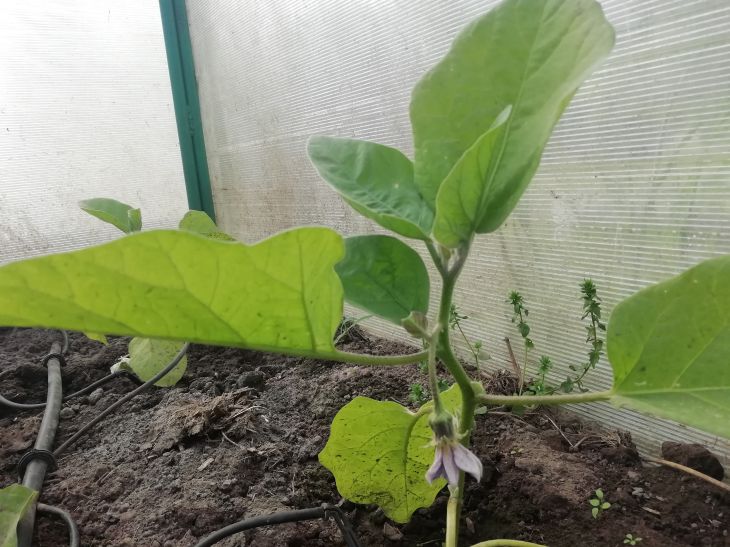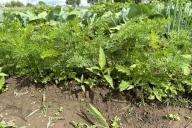Eggplants are considered a southern crop. They were once grown only in southern countries: Moldova, Ukraine and southern Russia.
Today, the geography of their growth has expanded significantly. They have long been established in summer residents' plots and greenhouses.
The culture is considered capricious. Difficulties arise at all stages of work: from shoots to harvest. What questions arise for gardeners who have decided to plant "blue ones", as they are popularly called? Let's take a closer look.
Emergence of seedlings
High-quality seeds and compliance with planting conditions are the conditions for a friendly seed germination.
If everything is done correctly, the shoots will appear in about a week. Warm temperatures of +25 degrees are needed for germination. The seeds are planted in the soil to a depth of 1.5-2 cm. If they are planted deeper, the shoots will appear later or will not be able to break through at all.
Reasons for poor germination
Seeds do not germinate for various reasons:

1. Poor quality seed material. Eggplant seeds retain their germination capacity for 5 years. The germination percentage decreases each year. Coated seeds do not require treatment before sowing and germinate more evenly. If you buy seeds from different manufacturers, the risk of being left without seedlings is reduced.
2. Planting errors. Seeds should not be planted deeper than 1.5 cm into the soil, otherwise it will be difficult for the sprouts to break through.
3. Excessive moisture. Before planting, make drainage holes in the containers. With excessive watering, the seeds rot and do not germinate. Watering is carried out when the top layer of soil dries out.
4. Place a drainage layer of small pebbles or other material on the bottom of the container, and place soil for sowing on top.
5. The temperature for germination should be no lower than +25 degrees. If there is not enough heat, the seeds of this heat-loving crop will not sprout.
How to help seeds germinate
Eggplants for seedlings are planted 70 days before planting in open ground. To speed up germination and not be late with growing seedlings, different methods are used:
1. Plant more seeds than the number of seedlings needed to be on the safe side;
2. Check the seeds for full weight in a salt solution. To do this, dissolve half a teaspoon of salt in 100 g of water and pour in the seeds. Wait 30 minutes. Remove the seeds that float to the surface. Use those that remain on the bottom for planting, after rinsing them with clean water.
3. Stimulate with special means: Zircon, Epin and other similar preparations. You can also use home remedies: aloe juice, honey solution, wood ash infusion with onion peel. Keep the seeds in the solution for no longer than 8 hours.
4. Germinate seeds before sowing.
Germination of seeds
Germination can be done in different ways. Use wet sawdust. They put it in a container, moisten it and spread the seeds. The seeds can be easily transferred from the sawdust to the seeding soil without damaging them.
If they are germinated in fabric, the seeds are closely monitored, and as soon as they sprout, they are immediately planted in prepared containers.
If the roots grow, they may break off during transplantation.
Place the containers with the sprouting seeds in a warm place and monitor the humidity of the fabric and sawdust. Additionally, wrap them in film. In a week, high-quality seeds should sprout.
Caring for seedlings
The emerging seedlings need to be properly cared for.
Temperature
To prevent plants from stretching out and to grow strong and healthy, the most important thing is to observe the temperature regime. The temperature during growth is reduced to +17 degrees. This will allow the root system to get stronger. After a week, the temperature is raised again to +25 degrees C. If the seedlings are on the windowsill, difficulties arise: excess heat from the radiator or cold from frozen glass.
In this case, the radiator is covered with fabric, and a layer of insulation is placed on the window.
Watering
Water the seedlings with warm, settled water. It is best to use water from melted snow or rain moisture. Increase the air humidity by spraying or installing open containers with water. Eggplants love this. The room is regularly ventilated, but drafts are avoided. Important! Diseases develop with excessive humidity.
Lighting
Insufficient lighting has a negative effect on seedlings. If there is not enough natural light, use phytolamps for illumination. Regular lighting from an incandescent lamp will not help and will even harm. It heats up too much. When placing seedlings on windowsills, protect them from sunburn by pulling gauze over the window. 2-3 times a week, turn the containers so that all plants receive sufficient heat and light.
Top dressing
The soil for seedlings should contain sufficient nutrients. If there are not enough microelements, additional feeding is done. Phosphorus fertilizers are needed for the development of the root system. They are applied a week after germination. After several leaves appear, the seedlings are fed with nitrogen and potassium. They stimulate growth and protect against diseases.
How to avoid seedlings from stretching
Seedlings that are strong and squat are considered high-quality. Stretching occurs for various reasons: violation of lighting, temperature, watering, fertilizing rules, and dense plantings. The problem is solved by correcting the mistakes made:
1. At high temperature it is lowered;
2. Increase illumination when there is insufficient light;
3. Normalize the watering regime;
4. Provide balanced feeding;
5. In case of dense plantings, thinning is carried out.
To stop the stretching, pinch the tops of the plants and add dry and warm soil to the containers. If there is not enough space for this, the walls of the container are extended by installing a frame made of cardboard or polyethylene.
Conclusion
In order for eggplant seeds to sprout and seedlings to grow healthy and stocky, you need to put in a little effort, and then this southern crop will delight you with a good harvest of tasty and healthy fruits.








